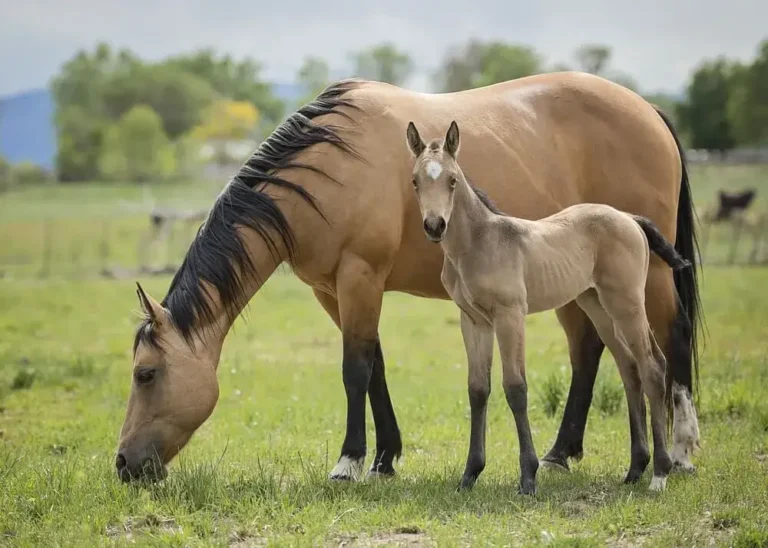Panda: An In-Depth Look at the Iconic Black and White Bear
The giant panda, often referred to as the panda, is one of the world’s most beloved and recognizable animals. With its distinctive black and white fur, playful demeanor, and status as a symbol of wildlife conservation, the panda holds a special place in people’s hearts worldwide. This article will explore the scientific classification, physical characteristics, habitat, behavior, diet, reproduction, predators, conservation status, interesting facts, evolutionary history, and the relationship between pandas and humans.
Contents
Scientific Classification
- Common Name: Giant Panda
- Scientific Name: Ailuropoda melanoleuca
- Kingdom: Animalia
- Phylum: Chordata
- Class: Mammalia
- Order: Carnivora
- Family: Ursidae
- Genus: Ailuropoda
- Species: A. melanoleuca
Pandas are a bear family member (Ursidae) and are closely related to other bear species, although they exhibit unique traits and adaptations that set them apart.
Physical Characteristics

The panda is known for its striking black and white fur, which serves as camouflage in their natural habitat.
- Size: Adult pandas weigh between 220 to 330 pounds (100 to 150 kg) and can measure up to 4 to 6 feet (1.2 to 1.8 meters) in length.
- Fur: The panda’s thick, woolly fur is mainly white with distinctive black patches around the eyes, ears, and limbs.
- Body Structure: They have a robust body, large head, and short tail. Their front limbs are strong and muscular, adapted for climbing and gripping bamboo stalks.
- Unique Thumb: Pandas possess a modified wrist bone that functions as a pseudo-thumb, aiding them in gripping and manipulating bamboo, their primary food source.
Habitat
Pandas are native to mountain ranges in central China, particularly in Sichuan, Shaanxi, and Gansu.
- Environment: They live in temperate broadleaf and mixed forests with dense understories of bamboo.
- Elevation: Pandas, with a cool and moist climate, are typically found between 5,000 and 10,000 feet (1,500 to 3,000 meters).
- Home Range: Each panda has a home range, and they are largely solitary animals, marking their territory with scent glands.
Behavior

Pandas are known for their solitary and gentle nature, although they can exhibit aggressive behavior when threatened.
- Activity: They are crepuscular which is most active during dawn and dusk.
- Social Structure: Pandas are solitary, except during the breeding season or when mothers raise cubs.
- Communication: Pandas communicate through vocalizations such as bleats, chirps, and growls, as well as scent marking.
- Sleeping Patterns: They spend a significant portion of their day (around 10 to 16 hours) eating bamboo and the rest sleeping, often on tree branches or bamboo thickets.
Diet
- Primary Diet: Pandas are classified as carnivores but have adapted to a primarily herbivorous diet, consuming up to 99% bamboo.
- Daily Consumption: An adult panda can eat 26 to 84 pounds (12 to 38 kg) of bamboo daily.
- Dietary Adaptations: Their strong jaw muscles and broad, flat molars are well-suited for crushing and grinding bamboo stalks and leaves.
- Occasional Meat: Although rare, pandas may also consume small mammals, carrion, or other plant materials such as fruits and vegetables.
Reproduction
Pandas have a low reproductive rate, contributing to their vulnerable status.
- Mating Season: Breeding occurs from March to May, with females being fertile for only 2 to 3 days per year.
- Gestation Period: The gestation period ranges from 95 to 160 days due to delayed implantation.
- Birth and Care: One or two cubs are usually born, but typically only one survives in the wild. Newborns are blind, hairless, and extremely small, weighing about 4 to 5 ounces (113 to 142 grams).
- Mother’s Role: The mother is the primary caregiver, and she spends months nursing and protecting her cub until it is ready to start eating bamboo.
Predators
Adult pandas have few natural predators due to their size and strength. However, cubs are vulnerable to:
- Leopards: Known to prey on young pandas in the wild.
- Dholes (Wild Dogs): Can threaten cubs, especially when unprotected.
- Humans: Habitat destruction and poaching have historically threatened panda populations.
Conservation Status
- IUCN Status: Vulnerable
- Population: Approximately 1,800 pandas remain in the wild, with around 600 in captivity.
- Conservation Efforts: China has established over 60 panda reserves, and breeding programs in captivity have seen considerable success. Reforestation and habitat protection are key to their survival.
- Threats: Habitat fragmentation, climate change, and human encroachment continue to challenge panda conservation.
Interesting Facts
- Unique Ancestry: Pandas diverged from other bear species about 19 million years ago, with fossils suggesting their ancestors were omnivorous before specializing in bamboo.
- Symbol of Conservation: The panda is the World Wildlife Fund (WWF) logo and serves as a global symbol for wildlife conservation.
- Panda Diplomacy: China has used pandas as diplomatic gifts since the Tang Dynasty, continuing to lend pandas to zoos worldwide as a goodwill gesture.
Evolutionary History
The giant panda’s evolutionary journey is a fascinating tale of adaptation and survival.
- Early Ancestors: Fossil evidence indicates that pandas were once widespread across China, Myanmar, and Vietnam, with early ancestors displaying more carnivorous traits.
- Dietary Shift: Over millions of years, pandas evolved into specialized bamboo eaters, developing unique adaptations such as their pseudo-thumb and powerful jaws.
- Genetic Isolation: Geographic isolation in the mountains of China has led to limited genetic diversity among wild populations, making conservation efforts crucial.
Relationship with Humans
- Cultural Significance: Pandas are revered in Chinese culture and have been depicted in art, literature, and mythology for centuries.
- Ecotourism: Panda tourism is a significant source of revenue in China, with visitors flocking to reserves and breeding centers to see these gentle giants up close.
- Research and Conservation: Collaborative international efforts, including breeding programs and genetic studies, aim to ensure the long-term survival of pandas.
Conclusion
The giant panda is more than just a beloved symbol of wildlife conservation; it is a testament to nature’s resilience and the importance of preserving biodiversity. While pandas face numerous challenges, ongoing conservation efforts and global awareness offer hope for their future. Protecting pandas means protecting their unique mountain habitats and, by extension, safeguarding a rich ecosystem that supports countless other species.
- Golden Retriever Pros and Cons: What Every Pet Parent Should Know - 15 September 2025
- Cane Corso Dog Breed: Health, Care, and Lifespan - 14 September 2025
- Catahoula Leopard Dogs: Description, Temperament, Lifespan, & Facts - 21 July 2025







